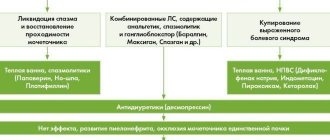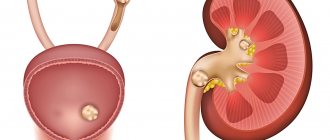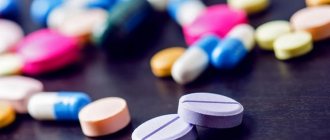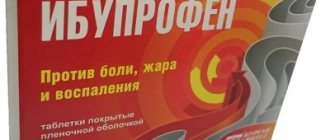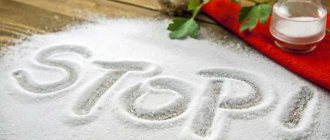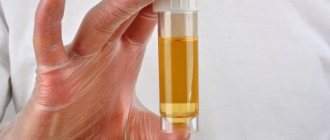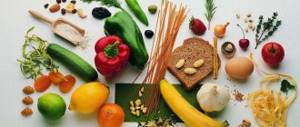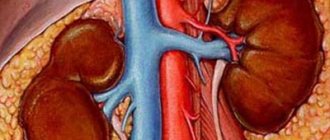What are pyelonephritis and cystitis?
Pyelonephritis or inflammation of the kidneys is quite common. This is a disease when the kidney tissue becomes inflamed. A person of any age can get pyelonephritis. To do this, it is enough to supercool.
Pyelonephritis can also be caused by diseases that a person has suffered before. These include scarlet fever, influenza, and sore throat. With sore teeth and inflamed gums, the kidneys are also at risk. And also if a person has chronic tonsillitis.
Cystitis is an inflammation of the bladder. This disease occurs due to infection in this organ.
People who have a weak genitourinary system often suffer from inflammation of these organs. And one of the methods of treating and preventing these diseases is a proper diet.
Basic principles of diet
Here is what, first of all, the diet suggests for inflammation of these organs:
- The main thing to follow in a diet for inflammation of the kidneys or bladder is the correct ratio of fats, protein foods and carbohydrates. In this case, there should be less protein food and fats, because they retain fluid in the body, making it more difficult for the body to get rid of the infection.
- The next rule is based on the fact that the patient needs to eat a limited amount of salt. For the same reason. Salt retains fluid in the body.
- In this case, meals should be regular. You need to eat food 4-5 times a day in small portions. With fractional nutrition, the body is least overloaded, including the genitourinary system.
- The main food in the diet for such a patient should be vegetables and fruits.
- Consumption of protein foods should also be limited. The fact is that excess protein in the body leads to the formation of harmful substances that negatively affect the liver and kidneys; this is one of the disadvantages of a protein diet.
- A mandatory rule is that the patient needs to drink at least 1.5 liters of clean water per day. Thus, the infection will be washed out of the body faster.
The main goal of the diet in this case is:
- Promote increased urine output.
- Consume more foods that alkalize the body
Diet during remission
A characteristic sign of bladder inflammation is an unstable reaction of urine from an alkaline to an acidic environment. Therefore, the patient simply needs to include alkalizing foods in his diet. Food products such as radish, broccoli, and cabbage have a negative effect on pathogens. When using them, remission can progress to a more acute stage.
For kidneys weakened by disease, it is recommended to eat lean meat and light broths. It is advisable that they be present in the diet daily. The meat should be boiled several times, remembering to change the water. This procedure will eliminate the irritating effect of fat on the kidneys and reduce the level of extractives in the body.
Foods high in potassium have a beneficial effect on inflamed kidneys. Apples, bananas, melon, pumpkin and tomatoes stimulate the proper functioning of the urinary system.
It is important to drink plenty of raw water. It will help prevent intoxication of the body and clean the urinary ducts. For 1 kg of a person’s weight per day, it is recommended to drink 30 ml of water. Not only water is considered a liquid, but also rosehip tea, as well as vegetables and fruits with a high juice content (cucumbers, watermelons, etc.). In the absence of swelling, on average you should drink from 1.5 to 2 liters of water.
What can't you eat?
Here is a list of foods that are sharply limited during inflammation of these organs:
- Fatty meats, lard.
- Fish from the river.
- Mushrooms.
- Sausages, sausages, hams and other sausage products.
- Bread made from rye flour.
- All types of legumes, as it is a vegetable protein.
- Sauces and seasonings with a spicy taste.
- Radish, sorrel, spinach, asparagus.
- Onion garlic.
- Products containing cocoa.
- Brewed coffee.
- Juices based on citrus fruits.
All of these products contain a high amount of salt and can lead to allergies, which makes the kidneys have to work harder than usual.
What can you eat?
A diet for such inflammation allows the following foods in the diet:
- All types of cereals.
- Chicken and quail eggs, but in limited quantities, no more than one egg per day.
- From fermented milk products you can eat kefir, low-fat cottage cheese, sour cream with a low percentage of fat.
- For sweets, you can indulge in limited quantities of jam, marshmallows, marmalade, honey, and marzipan.
- Vegetable light soups.
- Lean meat and fish can be eaten in limited quantities; they need to be steamed, grilled or boiled, the main thing is not to fry them in a frying pan.
- You can eat vegetables in any form, fruits except citrus fruits, as they irritate the mucous membrane and can cause allergic reactions.
Nutrition for kidney disease
In the menu of adults and children who have been diagnosed with nephritis, it is worth introducing foods with a diuretic effect with caution. Among these food products are:
- pumpkin;
- zucchini;
- cucumbers;
- beets;
- leafy salads.
Vegetable salads can and should be eaten, but only in moderation.
If you have jade, you can eat berries, fruits, dried fruits, walnuts, hazelnuts, cashews, seeds, and dairy products.
The diet should include fresh, stewed, boiled, baked vegetables, cereals, vegetable oil, foods rich in fiber, natural honey, compotes, jelly, herbal teas, fresh juices, fruit drinks.
You can eat potatoes in any form, all types of cereals, pasta made from durum wheat. You are allowed to eat no more than five eggs per week. Eggs are consumed boiled, soft-boiled. It is best to cook a steam omelette with herbs,
You can drink coffee and strong black tea only once a day throughout the day. Throughout the day, you can drink several mugs of tea with the addition of milk, honey, and lemon.
For nephritis, nutritionists recommend eating boiled, stewed, oven-baked, grilled meat, and sea fish. You can include veal, rabbit, beef, and poultry in your diet, but in moderation. Boiled or steamed meat can be fried in a small amount of vegetable oil to improve the taste. Meat dishes are best combined with vegetables, salads, and cereals.
Food can be seasoned with a small amount of spices - cinnamon, cumin, coriander, oregano, dried dill, paprika, white pepper. For added piquancy, you can season ready-made dishes with diluted wine vinegar and lemon.
For pyelonephritis, therapeutic nutrition should be dosed, fractional. It is recommended to eat food at the same time throughout the day. The daily diet is divided into five to six meals.
Do not add salt to food during cooking. Salt is added in minimal quantities to already prepared side dishes, soups, and broths. In acute forms of inflammation and chronic nephritis, salt is completely excluded from the diet. If there are no contraindications, you are allowed to consume no more than 5 g of salt per day.
As for the liquid consumed, not counting soups, the daily norm for adults is 800-1000 ml.
During exacerbation of the disease or chronic pathologies, it is very important to control the caloric content and energy value of the diet. The main method of cooking is steaming, grilling, or oven.
The duration of the therapeutic diet for kidney diseases is 10-12 months. To avoid repeated problems and exacerbation of the disease, you should stick to your diet and eat healthy foods.
During exacerbation
Acute forms of these inflammations are quite painful; the symptoms are relieved with medications. But you can also help yourself with a proper diet during an exacerbation. First of all, you need to completely refuse products that are on the prohibited list. In addition, it is recommended to consume foods that relieve inflammation and flush out bacteria from the genitourinary system.
These products include:
- Watermelon, cantaloupe and pumpkin are all large berries that are great diuretics that will cleanse your genitourinary system.
- The following vegetables will be useful: cucumbers, tomatoes, cabbage, cauliflower, beets and carrots.
- The diet for such inflammation of the kidneys or bladder should include fruit drinks. Cranberry or blueberry juice is incredibly healthy. These berries contain anti-inflammatory substances that successfully fight inflammation.
- Fruit drinks made from other berries, such as rowan and currant, are also good for the kidneys. They have a lot of vitamin C.
Causes of kidney inflammation
Inflammation of the kidneys occurs after hypothermia or as a complication after previous illnesses (flu, sore throat, tonsillitis, scarlet fever, etc.) due to a decrease in the body's immunity. Microbes that cause inflammation of the kidneys or bladder enter the urinary tract through the urethra and bladder, so cystitis or urethritis can be precursors to inflammation.
Timely start of taking medications and traditional medicine can block the passage of pathogenic bacteria and microbes into the urinary organs.
Children under 7 years of age, girls over 18 years of age and older people, mostly men, are more often susceptible to this inflammation. Such inflammation can be caused by colic or kidney stones.
Sample menu
A diet for such kidney inflammation implies the following approximate menu:
- Breakfast includes apple and carrot salad, oatmeal, and weakly brewed black tea.
- The snack consists of one apple and a glass of cranberry juice.
- Lunch: 100 grams of lean fish, grilled, garnished with any vegetables or any porridge.
- Snack: marshmallows if you want something sweet and a glass of blueberry juice.
- Dinner includes cottage cheese casserole and weakly brewed tea.
- At night, you can drink a glass of fruit drink made from your favorite fruit or a glass of low-fat kefir.
vselady.ru
Diet for kidney inflammation
The main thing when following a diet is its duration; it should last at least a year. Prohibited foods during a diet for kidney inflammation are:
- Rye bread - it contains a huge amount of salt, which retains water in the body;
- Salted fish (herring, sprat);
- Sweets (cakes, cakes, cocoa, chocolate and chocolates);
- Pickled food, pickled mushrooms and cucumbers;
- Meat and fish soups, fried sauces;
- Canned food, smoked meats;
- Salted meat;
- Spices (vinegar, horseradish, mustard, parsley, pepper, fried and raw onions);
- Cheese is not recommended due to its high salt content.
Only those products that do not contain large amounts of salt are recommended for consumption. The allowed amount per day is no more than one gram.
The following products are allowed to be consumed:
- Various types of cereals;
- Eggs in any form;
- Butter, cottage cheese, milk, margarine, kefir, sour cream;
- Marshmallows, jam, compotes, marmalade, soy bars, sweet buns, caramel, pancakes, honey, marzipan;
- It is better to cook soups without meat; add flavor to it by adding butter;
- Fish and meat should be consumed boiled.
- Sugar should be consumed in moderation.
Useful in relieving kidney inflammation are:
- Proper fluid intake - up to 3 liters of water per day for an adult, 1 liter for a preschooler and 1.5 liters of water for school-age children. Recommended: plum, apple and grape juices; lingonberry and cranberry fruit drinks; unnatural coffee; mineral still water; fruit and vegetable juices; milk. Tea made from black currants, rose hips, chokeberries or rowan berries provide the body with vitamins P and C. Drink half a glass before meals, 3 times a day. Sweet drinks, tangerine and orange juices, and natural coffee are prohibited.
- Pumpkin, melon and watermelon are good diuretics.
- It is better to give fruits and berries raw or prepare juices from them.
- Rutabaga, cucumbers, tomatoes, potatoes, cabbage and cauliflower, carrots, beets.
- Tangerines and oranges are contraindicated as they can cause an allergic reaction.
«>
Recipes for illness
Pumpkin soup. To prepare the soup, you will need about half a kilogram of pumpkin, 2 potatoes, carrots and onions. First, chop the vegetables, pour about 2 liters of water into a saucepan and boil it. Then add potatoes, pumpkin, carrots and onions. The finished soup will need to be ground in a blender.
Vegetable cutlets, for which you should take 500 g of cauliflower, 1 egg, a spoonful of semolina and butter, half a glass of milk, a little breadcrumbs. The first thing to do is chop the cabbage and simmer it with water and milk, then add semolina and cook for about 10 minutes, stirring constantly. Then let the dish cool, and then add the egg and mix well. Form cutlets from the prepared mixture, dip in breadcrumbs and steam.
Rice casserole with apple. You will need 1.5 cups of rice, a little butter, 4 small apples, 150 grams of sour cream and sugar. You need to pour 3 glasses of water into the pan and add rice there, bring to a boil, let cool and add half the butter and an egg. Prepare the apples, cut them, mix with sugar. Coat a baking dish with the remaining oil, place half the rice on the bottom, apples on top, then the rest of the rice. Add sour cream and place in the oven for 30 minutes at 200 degrees.
Compliance with the regime
During the inflammatory process, it is imperative to follow the regime. It is necessary to avoid contact with infectious patients, hypothermia, physical activity and colds.
It is necessary to observe bed rest, the correct daily routine, during the day you need to set aside several hours for daytime sleep. Rest at least 8 hours a day.
If your child is sick, you should not overuse baths. Girls should wash themselves every day with warm water and soap. In the house, the child should not be dressed too lightly, but not too warmly.
You need to spend a short period of time in the fresh air during the day, you need to dress according to the weather. Hypothermia should be avoided; sitting on cold or metal objects is prohibited.
It is important! The duration of adherence to the regimen depends on the course of the disease. After recovery, you should still adhere to the regimen for several months to avoid new inflammation.
Instructions for following the regime
- Herbal infusions can be used as anti-inflammatory drugs. The simplest and most common is chamomile. You need to brew a couple of tablespoons of flowers with 1 cup of boiling water and wrap them in a towel, consume them warm every hour. You can also take kidney tea and drink it with chamomile; this collection contains herbs that have antiseptic and diuretic properties.
- In case of kidney inflammation, bed rest must be observed. If pain occurs in the lumbar region, you need to warm it with a heating pad or apply salt heated in a bag. You can also wrap a woolen scarf around your lower back. For treatment, use diuretics, which increase the filtration capacity of the kidneys and help restore their excretory function, and antibacterial agents. Throughout the entire period of treatment, one should not forget about following a diet for kidney inflammation.
- In addition to herbal remedies, the following are effective in treating kidney inflammation: pumpkin juice (take ½ cup once a day); fruit drinks from cranberries and lingonberries; birch sap (drink a glass 3 times a day on an empty stomach); dried fruit compotes; potato juice (drink half a glass in the morning).
- Nutrition is very important for kidney inflammation. You should include in your diet: grapes, cranberries, watermelons, apples, gooseberries, lingonberries, sea buckthorn. Avoid eating fried, fatty, pickled and canned foods, and all types of alcohol.
It is important! To avoid re-inflammation, you need to remember the cause of the disease, which may be caries, chronic tonsillitis or infections of the genitourinary system.
tvoelechenie.ru
Sample diet menu
The correct menu for table No. 7 and for kidney inflammation may look like this.
Early breakfast: sago porridge cooked in milk, apple-carrot cutlets (cooked in the oven), tea.
Brunch: pear.
Recommended topic:
Symptoms of kidney inflammation
Lunch: potato soup (half portion), boiled potatoes and beef with sauce, fruit jelly.
Afternoon snack: sweetened wheat bran decoction.
Dinner: pilaf with dried sago fruits, grated beets, seasoned with sunflower oil, tea.
Before bed: freshly squeezed juice or decoction of kidney extracts.
An approximate menu for table No. 7 b for kidney inflammation may look like this.
Early breakfast: fruit salad, rice pudding, tea.
Late breakfast: sweetened, finely grated carrots.
Lunch: soup from a mixture of vegetables, boiled chicken in sour cream sauce, boiled potatoes, compote of dried apples and pears.
Afternoon snack: a sweetened infusion of bran made from wheat.
Dinner: soft-boiled egg, apple pancakes, tea.
Before bed: freshly squeezed juice.
An approximate menu for table No. 7 for kidney inflammation may look like this.
Early breakfast: soft-boiled egg, boiled buckwheat, tea.
Late breakfast: baked apples.
Lunch: cabbage soup without meat (half a serving) with sour cream, fried potatoes with boiled chicken breast, cranberry juice.
Recommended topic:
Kidney inflammation in a child
Afternoon snack: rose hip decoction.
Dinner: apple-carrot cutlets (cooked in the oven), casserole with cottage cheese, tea.
Authorized Products
The list of dishes and products acceptable in the presence of kidney inflammation includes:
- homemade bread baked from wheat flour without salt;
- vegetable soups in any broth, with the exception of meat, mushroom and dairy;
- dietary meat, poultry and fish;
- fruits and berries without limitation;
- milk, cream, sour cream (using cottage cheese, possibly while excluding meat from the diet);
- hard-boiled eggs, omelette;
- sago, rice;
- potatoes, vegetables, boiled and fried onions, parsley, dill;
- sugar, honey, jam, candy.
Juices and compotes
One of the main principles of nutrition for kidney inflammation is a certain drinking regime. In this case, it is better to drink not plain water, but juices, compotes and fruit drinks made from a variety of berries and fruits, for example, cranberries or lingonberries, which contain natural antiseptics.
Oils and fats
Limiting fat intake plays a vital role in treating kidney inflammation. The only acceptable products in this case are butter (without salt), ghee and vegetable oils. All other fats should not be eaten.
The essence of the problem
During an exacerbation of the disease, the diet should be strict, limited only to liquid dishes. During the remission stage, the diet can be diversified by including other healthy foods.
A well-developed nutritional plan is one of the main methods of lifestyle correction for pathologies associated with the body’s absorption of nutrients. Diet therapy is the main treatment for pathological damage to the renal system (especially pyelonephritis), diseases of the gastrointestinal tract and pancreas. In the treatment of other ailments (cardiovascular and endocrine systems, etc.) and during the period of postoperative recovery, dietary nutrition is a necessary addition to the main drug therapy, enhancing the effect of drugs.
Nutrition rules for renal pathology
Nutrition for pyelonephritis is aimed at facilitating kidney function by:
- maximum reduction of the load on these organs;
- restoration of the metabolic process of all organs;
- decreased pressure in the kidneys;
- reducing swelling;
- ensuring accelerated removal of various wastes and toxins from the body.
For kidney pyelonephritis, diet No. 7 is recommended. The basic principle of this diet is to reduce the protein content in food, normalize the level of fats and carbohydrates, and increase the consumption of vitamins.
Table 7 includes the following standards:
- The total calorie content of the menu for kidney inflammation is 2400–2700 kcal/day.
- Amount of necessary nutritional components per day: 400–450 g of carbohydrates, 90 g of foods containing sugar, 80 g of proteins, 90–100 g of fats (25 g - vegetable). At least half of the daily intake should be animal proteins. You should drink up to 2 liters of water.
- Food processing. You can boil or steam it. Frying with vegetable oils is allowed. Food should not be heavily chopped.
- Diet. It is necessary to increase the number of meals to 5-6 times a day, but accordingly reduce portions. Digesting a small amount of food greatly facilitates the functioning of the kidneys and speeds up metabolism.
- Limiting salt. If the excretory function of the affected kidneys is impaired, salts are poorly excreted from the body, settle in the kidneys, provoke swelling and increased blood pressure, and create favorable conditions for the formation of stones in the organs. With some improvement in your condition, you can consume 2–6 g of salt per day.
- Quitting alcohol. Drinking alcoholic beverages is prohibited due to the fact that alcohol delays the release of fluid and causes swelling. Fluid retention leads to a decrease in the release of various toxins and aggravates the pathology.
- Food temperature. Food should preferably be warm. In some cases, hot food may be consumed.
- Products to support normal alkaline urine balance. A shift in the acid-base balance of urine towards acidity leads to the development of pathogenic microbes. To normalize the pH level of urine, you need to include alkalizing foods in your menu - milk, fresh fruits and vegetables.
Diet for children
In acute nephritis, the diet has strict restrictions. For the first few days, the patient should not eat anything except:
- herbal decoctions;
- weak tea;
- freshly squeezed juices;
- compotes prepared at home;
- vegetables and fruits that have a diuretic effect (watermelon, zucchini, melon, etc.).
If after several days the patient’s well-being improves, the diet for pyelonephritis should also contain other foods, but in limited quantities. This:
- dairy products, including soups;
- boiled vegetables;
- flour and cereal products;
- granulated sugar;
- butter;
- raisin;
- dried apricots.
In case of acute nephritis, the use of:
- salt (it can only be added to dishes when cooked in a minimal amount);
- smoked meats and pickles;
- all types of canned food;
- mushrooms;
- fatty meat soups and broths;
- carbonated drinks;
- cream;
- cakes;
- legumes;
- coffee;
- hot seasonings and spices.
In the acute form of poelonephritis, it is also necessary to eat foods low in protein. After all, it unnecessarily loads the kidneys and can lead to various complications.
Proper nutrition for pyelonephritis is aimed at normalizing the functioning of damaged kidneys and unloading the urinary organs. The most significant advantage of the diet is its anti-inflammatory effect, which reduces the symptoms of the disease and speeds up the healing process.
In addition, there is a decrease in blood pressure and normalization of water balance, which prevents additional complications during exacerbation. Dietary food contains a large number of vitamins that have a beneficial effect, strengthen the immune system and fight inflammatory processes.
The diet for acute pyelonephritis includes restrictions that should help relieve pain. For acute pyelonephritis, a daily fluid intake of 2 liters and a decrease in salt levels to 6 grams per day are recommended.
It is allowed to consume dairy products, and during recovery, supplement the diet with lean meat. Soups should be vegetable; the presence of a small amount of cereal is allowed.
Acute pyelonephritis involves eating small portions at least 5 times a day and cooking food exclusively by steaming, in the oven or boiling on the stove.
It is important to refuse:
- salty;
- mushrooms;
- legumes;
- sweet;
- canned food;
- acute;
- alcoholic and carbonated drinks;
- smoked
Depending on the course of pyelonephritis and complications, the diet may differ, but some rules remain the same for any form of the disease:
- Elimination or limitation of salt. In the acute stage - no more than 3 g. per day, during remission - no more than 10 grams.
- Refusal of alcohol, carbonated drinks, coffee.
- Limiting animal fats, as well as foods containing phosphorus and sodium.
- Increasing the diet of foods rich in minerals and vitamins.
- Eating high-calorie but low-fat foods.
- Exclusion of rich broths, canned food, mushrooms, spicy dishes, smoked meats and all legumes.
The diet for kidney pyelonephritis should be gentle and contain light foods. You should eat at least 4 times a day in small portions. The calorie content of the daily diet should remain high, but not exceed 3200 calories.
By following a dietary diet, the healing process is accelerated, complications do not develop, and the patient’s condition significantly improves. The inflammatory process is stopped faster, metabolic processes are normalized, toxins are removed from the body, due to which the patient’s temperature decreases, pain stops, and well-being improves.
The diet for kidney inflammation is not very restrictive and strict; it can rather be called “proper nutrition.” An exception would be if a person, in addition to this disease, has an additional pathology.
So, let's consider the main 7 principles of proper nutrition for pyelonephritis:
- Drinking plenty of fluids per day will help promote urination. You must drink at least 2 liters of juice, tea, water, etc.;
- Removing spices and spicy foods from the diet. This will help relieve the affected kidney;
- Reduce protein and trans fat intake to also reduce the load on the organ;
- Elimination of products that cause gas separation;
- Reducing salt intake for edema. If the patient has swelling, this is a signal that it is time to pay attention to the balance of salt in food. The principle is explained by the fact that salt tends to retain water in the body, thereby loading weak kidneys and interfering with urination;
- Increase fruit consumption. In addition to the vitamins necessary for the body, fruits, berries also contain a lot of water, which will promote urination;
- Complete abstinence from alcoholic beverages. It also strains the kidneys and slows down the body's metabolism.
In your diet, you need to choose the right ratio of proteins, fats and carbohydrates. Doctors and nutritionists have long calculated the patient’s standard daily intake:
- protein – no more than 80g (animal proteins 40-50 g of the total norm);
- carbohydrates – 450 g maximum (up to 90 g of sugar, to maintain blood glucose levels);
- fats – up to 100 g (of which 20-25 g are vegetable);
- at least 2 liters of liquid (freshly squeezed juices, medicinal mineral water and herbal teas).
The total calorie content of food is 2500-2700 kcal per day.
There is a list of prohibited and permitted foods, which provides for a healthy diet for pyelonephritis.
Prohibited Products
This list includes those foods that will interfere with the treatment of kidney inflammation:
- flour (bread, buns and other flour products);
- seafood, smoked and fatty fish, caviar;
- strong broths or soups made from mushrooms, fish, meat or beans;
- stewed, fatty or fried meat;
- any variety of mushrooms and any type of preparation;
- some vegetables: radish, spinach, sorrel, garlic or onion. In addition, it is not recommended to eat canned food;
- meat, mushroom, hot sauces, mustard;
- natural or instant coffee, strong brewed tea, cocoa;
- smoked or fatty cheeses;
- sausage, frankfurters and other smoked products;
- confectionery, custard, chocolate of all kinds;
Remember! When following a diet for kidney pyelonephritis, you need to avoid foods that have a stimulating effect on the human nervous system.
Products that need to be excluded from the menu
The following foods should not be eaten if you have pyelonephritis:
- irritating the nervous system and mucous membrane of the urinary ducts;
- disrupting the functioning of the kidneys and slowing down the release of toxins, waste and fluids;
- with a large amount of protein, which oxidizes urine (meat, fish);
- containing various acidic extracts (oxalic and uric acid) and oils;
- with easily digestible carbohydrates that increase acidity, including legumes (beans, mung beans, beans).
The list of prohibited products also includes:
- fatty, rich soups;
- bread and products containing salt;
- fatty fish, all kinds of smoked meats, seafood pickles;
- canned foods, sausages;
- fatty meat with frying (the meat must be boiled beforehand);
- vegetables that irritate the urinary tract mucosa and increase urea levels (legumes, onions, garlic, radishes, radishes, sorrel and spinach);
- mushrooms;
- spices and seasonings, various sauces;
- fatty cheeses;
- lard in any form, cooking fats;
- strong drinks (coffee, tea, cocoa, mineral waters with trace elements);
- sweets and confectionery (chocolate, pastries, cakes with rich creams and sour cream).
Authorized Products
If you have pyelonephritis, you can eat light foods that do not burden the kidneys, regulate the alkaline balance of the bladder, and speed up the process of cleansing the body of toxins and waste. Drinking large amounts of fluid is recommended to help flush the urinary ducts and cleanse the kidneys of infection. The diet should consist of “healthy” foods - vegetables and fruits that increase hemoglobin.
To maintain the alkaline balance of urine, the menu must include dairy and fermented milk products, which are also a supplier of animal fats.
List of products allowed for consumption:
- fruit drinks and compotes, green tea with mint, herbal teas, jelly, freshly squeezed fruit and vegetable juices, rosehip decoction, etc.;
- one-day old bread without salt, pancakes, pancakes;
- lean meat (pre-boiled);
- vegetable, milk soups with the addition of cereals;
- various vegetables and vegetable salads (fresh, boiled);
- chicken eggs (1 piece per day) boiled or in the form of an omelet;
- milk and kefir;
- small noodles;
- various grains (buckwheat, oatmeal, millet);
- vegetable salad oil and unsalted butter;
- as a diuretic - watermelons in unlimited quantities;
- fruits and vegetables;
- mousses, jam, fruit purees, fruit ice cream;
- lean fish prepared in various ways.
What are the benefits of diet
Compliance with the principles of proper nutrition is the main supporting component for the treatment and prevention of pyelonephritis. As noted above, a gentle diet reduces the load on the disease-depleted kidneys and all urinary organs.
The main therapeutic effect of diet therapy is aimed at relieving the inflammatory process in the organ and alleviating symptoms. A proper diet promotes accelerated recovery and the onset of a period of calm in the chronic form of pathology.
The absence of salt in food accelerates the release of fluid, which flushes out waste and toxins, preventing the possible appearance of swelling and the manifestation of renal hypertension. Saturating the body with vitamins strengthens its defenses.
Consequences of not following the diet
Failure to comply with dietary nutrition is fraught with quite serious consequences, which lead to pathology, gradually worsening due to the heavy load on diseased kidneys:
- inflammatory damage to perinephric tissues;
- stones in the kidneys, bladder and urinary tract;
- damage and destruction of the kidney structure due to the accumulation of pus in them;
- impaired renal function;
- acute cardiovascular failure (endotoxic shock) caused by bacteria and toxins entering the blood;
- blood poisoning (sepsis) in severe forms of purulent pyelonephritis.
Dietary diet for adult patients
One-day standard dietary menu for kidney inflammation for adults:
- Breakfast should consist of: grated carrots or apples with olive oil, oatmeal, toast, tea with milk.
- For second breakfast, just drink a glass of freshly squeezed apple juice.
- For lunch, it is advisable to first cook cabbage soup in lean broth with the addition of fresh cabbage. The second - in the form of boiled fish (cod) with a side dish of buckwheat or rice (as an alternative - dietary chicken pilaf), plus cucumber-tomato salad and rosehip compote.
- For an afternoon snack, it is enough to eat 5 large prunes or dried apricots and drink 1 cup of green tea.
- Dinner includes cottage cheese and carrot casserole, finely chopped cabbage salad with a few drops of lemon juice, weak tea with honey. Dinner must be finished before 6 pm.
- Before going to bed, it is useful to drink mint or currant tea.
Recipes for recommended dishes
All dishes on the diet menu are not difficult to prepare, they do not require any special material or time costs.
It can be served as a side dish for lunch or as an independent dish for dinner or second breakfast.
Ingredients:
- 4 large boiled “in their jacket” potatoes;
- 1 small carrot;
- 100 g broccoli;
- 20 g each of vegetable and butter, flour;
- You can use ground coriander and oregano as spices.
Preparation:
- Remove the skin from the potatoes and cut into round slices.
- Separate the broccoli into florets, blanch and chop.
- Chop the carrots and simmer with butter.
- Place the vegetables in the pan in layers, spreading each layer with the prepared sauce: sour cream mixed with flour and butter.
- Cover the top of the casserole with potato slices and pour sour cream over it.
- Cook in the oven for half an hour at 180°C.
Potato casserole can be served as a main course for lunch or dinner
The dish is suitable for lunch as a main dish (without a side dish).
Ingredients:
- half a kilo of fresh veal;
- 1 medium zucchini;
- small parsley root;
- 1 carrot;
- 40 g butter;
- dried dill, basil.
Preparation:
- Chop the meat coarsely, lightly fry in a saucepan, add water.
- Cut the vegetables into pieces and add to the veal.
- Cook for 40–50 minutes.
- Sauté the zucchini in oil and add to the meat 5 minutes before it is ready.
- Season with herbs.
Stewed veal with vegetables can be served with a side dish of mashed potatoes
The soufflé can be prepared for lunch as a main course or served in the evening as a separate dish.
Ingredients:
- pike perch fillet - 700–800 g;
- skim milk - 100 ml;
- 30 g cow butter;
- 1 large spoon of flour;
- 2 eggs.
Preparation:
- Sauce: fry the flour in a dry frying pan until yellow; add milk, add butter, stir quickly and simmer over low heat until thickened. Add salt.
- Preparing the fish: wash the fillet, cut into pieces, dry. Puree the fish in a blender. Beat the egg yolks into the mixture. Mix well again and add the cooled milk sauce.
- Final stage: Beat the whites until stiff foam and carefully mix into the fish. Place the souffle in silicone molds so that it takes up no more than half of them.
- Place the molds in a preheated oven and cook for half an hour at a temperature of 180–200°C.
- The soufflé should rise strongly and become crusty. The dish should be eaten hot; you can prepare a vegetable salad as a side dish.
Fish soufflé - a dietary and nutritious dish
Curd pudding
The dish is suitable for serving for breakfast or afternoon snack.
Ingredients:
- milk - 50 ml;
- 1 tablespoon each of semolina and butter;
- 400 g grated cottage cheese;
- 1 egg;
- 2 packets of vanilla sugar.
Preparation:
- Cook thick semolina porridge.
- Cool, add the rest of the ingredients.
- Mix the mixture and place in the mold.
- Cook in the oven for half an hour at 200°C.
- The classic pudding recipe involves cooking by boiling. To do this, put the mass in a thick napkin, greased with oil, tie it tightly (tied with thread) and cook over low heat for 1.5 hours.
- You can also cook the dish in a water bath.
Curd pudding is perfect for serving during breakfast.
Vegetarian borscht
Served as a first course for lunch.
Ingredients:
- 1 carrot;
- 2 potatoes;
- 100 g shredded cabbage;
- half an onion;
- 1 beet.
Preparation:
- Boil vegetables in one and a half liters of water.
- Grate the beets and simmer separately, add half a teaspoon of apple cider vinegar (this will preserve the color of the vegetable and emphasize the taste).
- 7-8 minutes before the end of cooking, add the beets, grated large peeled tomato, and add a pinch of sugar.
- Sprinkle the finished borscht with herbs and season with a spoonful of sour cream.
Borscht without meat broth - a vitamin-rich first course
Diet for pyelonephritis in pregnant women
The dietary nutrition of pregnant women with pyelonephritis is somewhat different from the usual diet for adults in that the diet of sick expectant mothers should be dominated by products that affect intestinal motility - stimulating intestinal motility and facilitating its emptying (fresh and dried prunes, apricots and dried apricots, rhubarb compote, dishes from beets and zucchini).
To form the fetal skeletal system, increase the consumption of foods with calcium (cottage cheese and kefir, fish and seafood, cheeses).
Pregnant women with pyelonephritis and cystitis must drink a lot. The remaining aspects of diet therapy are similar to the usual renal diet.
Nutrition for chronic pyelonephritis in adults
The diet for chronic pyelonephritis in adults is very similar to the diet for acute illness.
You need to avoid those products listed above. What can you eat? Chronic pyelonephritis allows you to eat lean fish and poultry, vegetable soups, eggs, cereals, honey, sweets and fruits. In this case, the amount of salt should also be reduced, and dry herbs or lemon juice can be used as a substitute.
You will not have to follow a diet for a chronic illness for 1 or 2 years; this process will last a lifetime in order to exclude the possibility of recurrence of symptoms.
Children's diet for pyelonephritis
The main products for children with kidney damage are milk and fermented milk (yogurt, curdled milk, kefir), broths and soups, vegetable purees, liquid porridges. Berry fruit drinks, fruit compotes and fresh juices are very healthy and loved by children.
Meat, mushrooms, sausage products, pickles and smoked products, spices, cocoa, spinach and cauliflower, and fried foods are excluded from the children's menu. All dishes must be boiled or stewed. Meals are frequent, in small portions.
The main feature of children's diet therapy is the inclusion in the menu of protein products necessary for the growth of the child. It is recommended to give children foods containing easily digestible proteins - eggs, cottage cheese, cheese and low-fat sour cream. Those with a sweet tooth can be given honey, jam, marmalade, marmalade. Creams, chocolate, and sweets will have to be excluded.
In general, the diet for pyelonephritis in adults (as well as in children) is not so strict. The main limitation is to remove recipes for spicy and salty dishes. Otherwise, such a diet well heals and rejuvenates the body, relieving stress and giving rest to all organs of the digestive and urinary system.
nefrol.ru
Complications
Important! Diet for pyelonephritis is a way of life, not a temporary measure. It must be followed even during remission to reduce the risk of exacerbations.
Failure to adhere to the diet is fraught with various complications:
- progression of the inflammatory process;
- spread of inflammation to the tissue around the kidney (paranephritis);
- urolithiasis disease;
- development of an abscess, carbuncle (usually with frequent exacerbations of the disease);
- renal failure;
- accumulation of toxins and bacteriotoxic shock.
For pyelonephritis in any form, you must follow a diet. It will help alleviate the course of the disease and reduce the risk of relapse. The recommended diet should be your lifestyle.
General diet rules
If pyelonephritis is not accompanied by severe swelling, then the patient’s diet in most cases is practically no different from the diet of a healthy person.
Otherwise, the differences will be very significant. The main condition of the diet for inflammation is that it must be strictly followed for at least a year.
The basis of nutrition for kidney inflammation is the correct ratio of proteins, fats and carbohydrates in the diet.
During exacerbations of kidney disease, it is not recommended to consume protein and fatty foods in large quantities, since they inhibit the excretion of fluid, making it difficult for the body to defeat the infection.
It is precisely because of fluid retention in the kidneys that the patient cannot eat a lot of salt (the maximum allowed amount varies individually, but most often it is up to 1 g per day).
Like most diseases of the gastrointestinal tract and liver, kidney inflammation must certainly be accompanied by small and regular meals. Doctors recommend eating about 5 times a day in small portions and under no circumstances overeating.
This approach allows you not to overload the body and the excretory system, in particular. The basis of the patient’s diet should be fresh fruits and vegetables.
Another important rule of the diet is the daily consumption of sufficient amounts of drinking purified water, the specific amount is determined by the doctor. This will help the body eliminate the infection from the body faster and more effectively.
The diet for nephritis completely excludes the consumption of any alcoholic beverages and smoking.
The renal inflammatory process in most cases must be accompanied by nutritional adjustments. In general, the diet helps increase urine output and contains foods that alkalize the body.
It is important to follow a diet and sleep schedule when you are sick. Hypothermia, any contact with infectious patients, heavy physical activity and colds should be avoided. In addition to following the diet, you need to rest at least 8 hours a day, and also do not forget about daytime sleep.
Basic principles
To prevent the development of an acute period of pyelonephritis in men and women, one must try to facilitate the activity of the damaged organ:
- reduce the pressure on him;
- restore metabolism;
- eliminate swelling;
- speed up the elimination of toxins.
The optimal diet for chronic pyelonephritis is number 7. It consists of reducing the inclusion of proteins in the diet, increasing vitamin compounds, and normal lipid and carbohydrate content.
Diet for cystitis and pyelonephritis implies:
- Total calorie content up to 2700 kcal/day.
- Per day: up to 450 g of carbohydrates, no more than 80 g of proteins (half are animal proteins), up to 100 g of lipids (25% plant origin). Water – up to 2 liters.
- Steaming or boiling foods. It is not allowed to chop too much.
- A certain mode. You need to eat 5-6 times a day in small portions.
- Reducing salt intake. You should not eat too salty foods, because if kidney function is impaired, salts are difficult to remove from the body, which provokes edema and arterial hypertension.
- They eat only heated food.
Is it possible to drink beer if you have pyelonephritis? A competent specialist will require abstinence from any type of alcohol. Alcohol inhibits the release of fluid and contributes to the development of edema. Alcohol in pyelonephritis aggravates the course of the disease.
The diet for pyelonephritis in adults suggests that nutrition should not only be balanced, but also dosed. The nutritional value of the foods consumed must be sufficient to support the body depleted by the disease.
Patients with pyelonephritis should follow table No. 7. It is suitable for patients with kidney disease in the absence of chronic renal failure.
Dietary recommendations differ depending on the form of the inflammatory process. Dietary table No. 7 for pyelonephritis is divided into 2 groups:
- No. 7a - diet for acute pyelonephritis (the most gentle for the kidneys);
- No. 7b - nutrition for chronic pyelonephritis.
The basic principles of table 7 are similar, regardless of the subgroup:
- adherence to the regime, eating food at regular intervals, at least 4 times a day;
- exclusion of salt and heavy protein foods from the diet (in the remission stage, up to 10 g of salt per day is allowed);
- daily protein intake – up to 20 g, fat – up to 80 g, carbohydrates – 350 g;
- proper heat treatment of consumed dishes: food can be boiled, steamed, baked, stewed, but not fried;
- reduction of products with harmful chemical composition;
- refusal of alcohol, carbonated drinks, strong tea and coffee;
- exclusion of legumes, pickles, hot seasonings, canned food and smoked meats.
Food should not be fatty, but high in calories and vitamins - no more than 3200 kcal.
The main purpose of the diet for pyelonephritis is to reduce the load on diseased kidneys, as well as to enhance the removal of nitrogenous compounds and excess fluid from the body. Between meals you need to drink clean water, non-acidic juices or compotes, but in small sips.
During an attack of acute inflammation on the first day, it is better to completely exclude protein foods from the diet. On day 2 you can eat vegetables and fruits, which have a diuretic effect.
A plant-milk diet is indicated for days 7-10. It involves the inclusion of dairy products and cereals in the diet. The maximum permissible daily dose of salt is 3 g. After acute symptoms have decreased, you can move to table No. 7.
With chronic pyelonephritis, it is important not only to eat properly, but also to have a healthy lifestyle. It is necessary to increase the volume of fluid consumed to 2-2.5 liters per day to enhance the filtration activity of the kidneys. In case of acute pyelonephritis, it is necessary, on the contrary, to limit the drinking regime to 1 liter.
An inactive lifestyle, uncontrolled use of medications, stress, and hypothermia lead to decreased immunity.
Acute pyelonephritis may develop against the background of acute respiratory viral infection, sore throat, pneumonia, sepsis, intestinal or other infection. This disease can also be caused by infections in the urinary tract.
The main manifestations (symptoms) of acute pyelonephritis:
- Fever, chills;
- Lower back pain;
- Frequent and painful urination;
- Cloudy urine;
- Headache, weakness;
- Pain in joints and muscles.
Women are 6 times more likely to suffer from pyelonephritis than men. In children, this disease is in second place after diseases of the respiratory organs.
The diet for pyelonephritis is, as a rule, diet 7 (according to Pevzner). Its goal is to reduce the load on the kidneys; normalize metabolic processes in the patient’s body; relieve swelling; reduce blood pressure to normal levels.
In case of acute pyelonephritis, it is necessary to exclude pickles, smoked meats and marinades from the diet. Limit protein and fat intake. Dishes are boiled, stewed or baked.
In the acute period of the disease, to quickly remove toxic products from the body, it is recommended to consume up to 2 liters of liquid. It can be weak sweet tea, compote, juice. It is useful to drink still mineral water, decoctions of medicinal herbs, cranberry and lingonberry juice, and a decoction of rose hips. You can eat fresh fruits and vegetables that have a diuretic effect (watermelon, melon, pumpkin, cucumbers).
In the first week of illness, a dairy-vegetable diet with a high content of fresh vegetables and fruits, juices and compotes is prescribed. As soon as the patient’s condition improves, body temperature normalizes, symptoms of intoxication disappear, the diet can be expanded.
Basic nutrition rules:
- Fractional meals - in small quantities 4 - 5 times a day;
- The food temperature should be moderate;
- Steam, boil, stew or bake dishes using vegetable oils;
- It is better to add the allowed amount of fat to ready-made dishes;
- Diet No. 7 excludes all alcoholic, carbonated drinks, and beer.
In approximately 20–30% of cases, acute pyelonephritis becomes chronic, which occurs with periodic improvements (remissions) and exacerbations.
Therapeutic nutrition for chronic pyelonephritis during an exacerbation is the same as for the acute form of the disease. During the remission stage, food should be sufficiently high in calories and fortified.
The main nutritional components in diet No. 7 are presented in the following quantities:
- Proteins – 70 – 80 g;
- Fats – 70 – 80 g;
- Carbohydrates – 400 – 500 g.
In the diet for kidney inflammation, vitamins are introduced in vegetables, herbs, fruits and juices.
Menu for the week
Monday:
- Buckwheat porridge, vegetable salad, tea with milk;
- Fruits;
- Lenten borscht, boiled potatoes, baked catfish, compote;
- Yogurt;
- Stewed vegetables, jelly.
Tuesday
- Pearl barley porridge, cucumber, rosehip decoction;
- Omelet with vegetables;
- Vegetable soup, baked zucchini, cranberry jelly;
- Kefir, baked potatoes;
- Pasta, vinaigrette, tea.
- Omelette, rice milk porridge, tea;
- Semolina pancakes with jam;
- Vegetable soup, boiled potatoes with beef, jelly;
- Tea with milk, cookies;
- Cottage cheese with vegetables and herbs, juice.
Thursday
- Oatmeal with fruit, tea;
- Pumpkin salad with honey;
- Lenten borscht, pasta with meat, compote;
- Vinaigrette, kefir;
- Cottage cheese casserole with fruit, tea.
Friday
- Buckwheat porridge, vegetable salad, juice;
- Omelette with apples;
- Vegetarian soup, meat pudding, jelly;
- Zucchini stuffed with rice and vegetables;
- Potato zrazy, kefir.
Saturday
- Curd pudding, carrots stewed with apples, tea;
- Baked zucchini, juice;
- Lenten borscht, mashed potatoes, steamed cutlets, compote;
- Milk, cookies;
- Vegetable stew, baked fish, tea.
Sunday
- Semolina porridge, fresh fruit, tea;
- Grated carrots with sugar and sour cream, juice;
- Vegetable soup, wheat porridge with boiled veal, rosehip decoction;
- Yogurt;
- Pancakes with apples, kefir.
In addition to calorie content, there are other restrictions on a therapeutic diet. It is important to process food correctly; chopping the food is not required unless there are concomitant stomach diseases.
Basic Rules:
- Salt is completely eliminated. In rare cases, your doctor will allow moderate consumption. In hospitals, up to 5 g is given to patients on hand so that the dish can be seasoned directly on the plates;
- frying is allowed on a diet, but it is important not to overdo it. It makes more sense to cook and stew; you can bake food or use a grill;
- It is important to introduce alkalizing foods into your diet. These are vegetables, milk, fruits. An acidic environment promotes the growth of microbes.
A diet for pyelonephritis does not imply compliance with temperature conditions. You can eat cold, hot dishes, solid foods, even nuts and seeds.
Permitted and prohibited products
All prohibited foods contain a large amount of salt, can cause allergic reactions and force the genitourinary system to work in enhanced mode. During inflammation, you should not eat the following foods:
- all fatty meats, including lard;
- mushrooms;
- river fish;
- bread with bran or rye flour;
- legumes, they contain a lot of protein;
- any hot sauces, spices and seasonings;
- all types of sausages, they always contain a lot of salt;
- salted, smoked, pickled and lightly salted foods;
- canned products;
- almost all types of cheeses;
- rich fatty meat soups;
- sweet foods rich in carbohydrates, baked goods;
- freshly squeezed citrus juices;
- cocoa and coffee;
- greens rich in acid, including spinach, asparagus, sorrel;
- onion and garlic.
The doctor himself prescribes an individual diet for the patient, in accordance with the results of his tests, previous diseases and anatomical characteristics of the body.
However, in most cases, recommendations are based on limiting the consumption of the products listed above.
For inflammation, the diet allows all types of cereals, chicken and quail eggs (no more than 1 egg per day), light vegetable soups, lean meat or fish, cooked in any way except frying.
Dairy products are allowed to drink kefir, eat low-fat sour cream and cottage cheese. Vegetables and fruits, except citrus fruits, can be consumed in any form. Among sweet foods on a diet, you can eat marmalade, marshmallows, honey, jam and marzipan in small quantities.
During an exacerbation, diet will help relieve acute symptoms. In this case, it is recommended to supplement the diet with the following products: pumpkin, cabbage, cucumbers, melon, tomatoes, watermelon, various fruit drinks made from currants, cranberries, rowan berries or blueberries. They will perfectly cleanse and restore kidney function.
In case of inflammation, salt should be added to food only at the end of cooking, in order to thus reduce its consumption. If the inflammation is acute, doctors recommend completely removing salt from the diet.
For quick and successful kidney treatment, you must strictly follow the rules and restrictions of the diet, especially during the period of drug therapy.
mkb03.ru
Recipes
- banana - 1 piece;
- carrot - 1 piece;
- honey - to taste.
The carrots need to be grated, and the banana needs to be peeled and cut into rings. Place vegetables and fruits in alternate layers. Drizzle with honey.
- rowan – 300 g;
- apple – 2 pieces;
- water – 1 l;
- sugar - to taste.
The berries are sorted and washed. The apples are washed and cut into thin pieces without peeling and removing the seeds. Pour water into the pan and, after waiting for it to boil, lower the berries along with the apple. After boiling again, add sugar and cook for another 15 minutes. Let sit covered for 10 minutes.
Dietary food can be not only healthy, but also tasty. For the first course you can prepare millet soup. You will need 2 tbsp. l. millet, 2 potatoes, 1/2 carrots, greens.
Preparation:
- Cut the potatoes into cubes, carrots into strips.
- Pour into boiling water. Cook for 15 minutes.
- Add millet, cook for 10 minutes.
Season the finished dish with 1 tbsp. l. butter and sour cream.
Pumpkin soup turns out delicious. You will need 300 g of pumpkin, 2 potatoes, 1/2 carrot, onion.
Preparation:
- Bring 1.5 liters of water to a boil.
- Add chopped vegetables.
- Grind the finished soup in a blender.
For the main course, you can prepare a side dish; beef stewed with zucchini will do. Preparation:
- Cut 0.5 kg of beef into cubes and simmer in a small amount of vegetable oil and water.
- Add parsley root and diced carrots to the meat.
- Then add the diced zucchini. Simmer until done.
Season the finished dish with fresh herbs.
To diversify the menu, you can make vegetable cutlets. The main vegetable will be cauliflower; you will need about 700 g of it. You also need to prepare 100 ml of milk, an egg, 1 tbsp. l. semolina and 1 tbsp. l. melted butter.
Preparation:
- Disassemble the cauliflower into inflorescences, pour in milk and 50 ml of water, add butter. Simmer for 10 minutes.
- Add semolina, simmer for 5 minutes.
- Cool the mixture, beat in the egg and knead.
- Form cutlets, roll in breadcrumbs.
- Steam.
You can treat yourself to something sweet by preparing rice porridge with dried fruits. A handful of rice needs to be washed and filled with water twice as much as the cereal. Cook until done. Steam 10 g of raisins and dried apricots in boiling water in advance. Pour dried fruits into hot porridge, add 10 g of butter and sugar. Cover the pan with a lid for 10 minutes.
